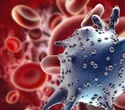New research shines light on position-specific hallmarks of cancer
A team led by the Cancer Immunogenomics group at the Josep Carreras Leukaemia Research Institute, the Computational Biology group at the Barcelona Supercomputing Center and the Germans Trias i Pujol Research Institute shows, for the first time, that within a tumor, the expression of the different hallmarks of cancer is not cell-specific, but rather position-specific. Under this new light, tumour architecture emerges as a valuable source of information to understand tumor dynamics and predict its sensitivity to anticancer drugs.
"What is a tumor?" This is the fundamental question to answer if we want to treat cancer effectively. Our vision of cancer and tumors has been evolving with time, from the simplistic bunch of all-similar malignant cells to a more sophisticated, heterogeneous and hierarchical cellular structure, composed of many different cell types. Recently, a new paradigm has emerged: the hallmarks of cancer.
The hallmarks of cancer are features that, when unlocked in a cell, put it in the road to malignant transformation, to express it in simple words. So far, there are 13 hallmarks, and each is defined by the expression of a set of genetic pathways, that can be identified in the lab by using genomics tools. Previous research showed that not all cells express all the hallmarks in a tumor so, how is hallmarks expression organised? And, most importantly, does this have any clinical implications?
To answer these questions, Dr. Eduard Porta, principal researcher of the Cancer Immunogenomic laboratory at the Josep Carreras Leukaemia Research Institute (IJC) and researcher of the Computational Biology group at the Barcelona Supercomputing Center – Centro Nacional de Supercomputación (BSC-CNS), led a team of renowned scientists, including Dr. Esteller (IJC), Dr. Barretina (IGTP), Dr. Real (CNIO) and Dr. Bailey (Simmons Center for Cancer Research, USA). The output of the collaboration was recently published at the top journal Cell Reports, showing the thorough analysis of 63 tumor samples from 10 common malignancies, including breast, lung, prostate and colorectal cancer. Dr. Mustafa Sibai signs the article as lead author.
In the research, they used a totally new approach and focused on the identification of the different functionalities of each cell into the tumor, according to its hallmark's expression instead of cell-type. In this way, they could see how malignant cells specialised in growing the tumor, while non-cancer cells surrounding it – called the tumor microenvironment – contributed with the suppression of the immune system or preventing the efficient delivery of anticancer drugs, for example.
Also, the different hallmarks were found to be expressed in cells located in specific areas within the tumor, a feature seen also in tissue and organ development. On this regard, the position of different hallmarks was found to be not random but followed a pattern that could be seen across all the tumors in the study and, probably, in many other cancer types.
Furthermore, it seemed that hallmarks may influence each other, and the position of ones can be predicted by the presence of others, using machine learning algorithms. This would be a disruptive vision on tumor evolution, moving from a selection-based paradigm to an ecological perspective where function, expressed in terms of hallmarks, could be the golden rule.
#ResearchChemistry, #ChemicalInnovation, #Science, #ScienceResearch, #ScientificResearch, #ResearchAndDevelopment, #ChemistryEducation, #ChemistryExperiments, #ChemistryLab, #ChemistryStudents, #ChemistryStudy, #OrganicChemistry, #InorganicChemistry, #PhysicalChemistry, #AnalyticalChemistry, #Biochemistry, #MaterialsChemistry, #TheoreticalChemistry, #AppliedChemistry, #MedicinalChemistry
Visit Our Website : researchchemistry.org
Nomination Link : researchchemistry.org/award-nomination/
Registration Link : researchchemistry.org/award-registration/
Member Link : researchchemistry.org/member-submission/
Contact Us: contact@researchchemistry.org
Social Media Links
Instagram : www.instagram.com/chemistryaward
Twitter : x.com/Chemistryaward
Pinterest : in.pinterest.com/chemistrymails




Comments
Post a Comment